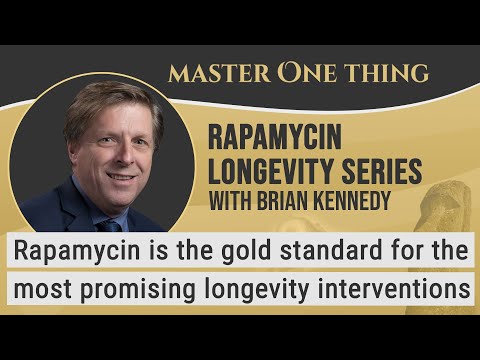In the Rapamycin Longevity Series I interview the world’s leading longevity researcher Brian Kennedy. He is currently leading a huge and unique research project in Singapore where he together with his team is creating an efficient pipeline for validating longevity interventions in humans and getting it out in practice. It’s very interesting and important steps forward! These are the three key takeaways I take with me.
-
One interesting thing that Brian pointed out was that most longevity interventions inhibit mTOR in one or the other way and this may increase the risk that we inhibit mTOR too much when we combine lots of interventions with each other.
-
He also pointed out the value of personalized longevity protocols. It’s very easy to just copy and paste what other people are doing but that is probably not a way of creating an optimal longevity protocol for a specific person. We also know that interventions may have different effects depending on gender, age, weight, lifestyle, context, genetics, diseases etc.
-
Many important longevity discoveries have some sort of serendipity (= accidental discovery) connected to it. A classic famous example of this was in 2009 when ITP (=Intervention Testing Program) tested Rapamycin for the first time in mice. The plan was to start the intervention early in the mice life like all research experiments do as a standard when testing interventions. But they found out a problem with the bioavailability of Rapamycin so the experiment needed to be postponed. When they found the solution to increase the bioavailability then the mice were old but they decided to start the experiment anyway. This led to a big paradigm shift in the longevity research field because the results from the experiment showed both the best lifespan effect and on top of this that a longevity treatment can be started late in life. Without this type of serendipity in the field we would not be where we are today. So big thanks to all researchers who have the courage to think and do things outside the box.
Here is the link to the podcast interview with bonus slides on youtube
02:13 Longevity interest and research
04:07 Lifespan discovery of sir2 in yeast
06:42 Lifespan discovery of TOR (mTOR) in yeast
07:14 mTOR and calorie restriction
09:19 mTOR and mechanistic downstream effects
09:55 mTOR activation and inhibition
10:20 Problem with mTOR chronic overactivation
12:41 Challenges in Singapore and in the world
13:19 Increase healthspan by slowing aging
14:37 Create a pipeline for healthy longevity
16:54 Potential in squaring the longevity curve
18:48 Validation of longevity interventions
21:00 Different biological clock
23:52 Connect the longevity pieces together
25:00 Hallmarks of aging
26:11 Seven pillars of aging are connected
27:58 Aging the biggest risk factor for age-related diseases
30:51 Combining longevity interventions
33:14 Risk of too much mTOR inhibition
36:14 Alpha-ketoglutarate (AKG)
39:38 Who benefits best in taking AKG
40:55 Brian’s longevity stack
42:12 His experiences with Rapamycin
45:58 Cycling mTOR inhibition
48:20 Things to keep an eye on when taking Rapamycin
49:24 Start of a Rapamycin longevity trial
51:49 Rapalogs - Next generation mTOR inhibitors
53:02 Other ways to inhibit mTOR
54:44 Low vs high protein intake for longevity
57:26 Personalized longevity interventions
1:00:35 Personalized mTOR inhibition
1:01:43 Most promising longevity interventions
1:03:27 Brian’s longevity protocol
1:06:28 How can longevity community speed up things
1:08:37 Contact information
